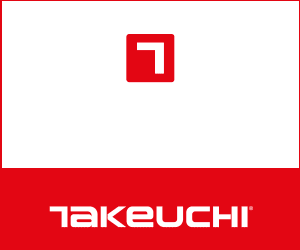The Office for National Statistics says that construction output is estimated to have increased by 0.5% in quarter 4 (October to December) 2024 compared with quarter 3 (July to September) 2024. This came solely from an increase in new work (1.2%), as repair & maintenance fell by 0.4%.
Worryingly, however, new orders in the fourth quarter fell to their lowest level since the covid-induced slump of spring 2020.
The rise in fourth quarter output was driven by growth in November 2024, up by 0.6% (revised from 0.4%), and followed no growth (0.0%) in October 2024 (revised from a fall of 0.3%).
Monthly construction output is estimated to have fallen by 0.2% in volume terms in December 2024; this came solely from a fall in repair & maintenance (1.8%) as new work grew by 1.1%.
At the sector level, five out of the nine sectors fell in December 2024. The main contributors to the monthly decrease were non-housing repair & maintenance, and private housing repair & maintenance, which fell by 1.8% and 1.4%, respectively.
Total construction new orders fell by 2.4% (£231m) in Q4 2024 compared with Q3 2024. This quarterly decrease came solely from infrastructure new work and private industrial new work, which fell by 23.5% (£496m) and 19.7% (£197m), respectively.
Annual construction output in Great Britain increased by 0.4% in 2024 compared with 2023; this was the fourth consecutive year of annual growth.
At the sector level, four of the nine sectors saw an increase in annual growth in 2024. Non-housing repair and maintenance, and private housing repair and maintenance were the largest positive contributors, growing by 8.5% and 7.0%, respectively. The main negative contributor to annual growth was infrastructure new work, which fell by 9.3%.
However, total construction new orders decreased by 2.4% (£231m) in Q4 2024 compared with Q3. This follows a decrease of 23.7% in Q3 compared with Q2. In fact, Q4 2024 showed the lowest level of total construction new orders (£9,268m) since covid-infected Q2 2020 (£6,024m).
Scott Motley, head of programme, project and cost management at construction consultant Aecom, commented: “A month-on-month dip in output, particularly within a quarter of growth, wouldn’t usually in itself be a major concern for contractors. However, with growth forecasts being revised and economic conditions remaining challenging, they will be hoping that it’s not the first sign of a trend for 2025.
“It’s encouraging that the current pipeline of work for contractors is healthy, with most already having filled their order book for the year, but firms are minimising the risk they’re willing to take on, and that’s pushing up tender prices and slowing down project starts.

“The sector will be looking to the government’s long-awaited industrial strategy as a catalyst to help firms break out of this holding pattern. Thinking more long-term, looming labour shortages will need to be addressed with moves to boost training and improve access to skilled overseas workers.”
Clive Docwra, managing director of property and construction consultancy McBains, said: “There will be little surprise among the industry that December witnessed a fall in output, given the ups and downs of the previous eleven months.
“Despite the disappointing December return, the industry will take heart that new work orders actually grew during the month, but more importantly the fourth quarter of 2024 saw half a percentage rise in output, which is more than perhaps many expected. It means a number of industry sectors will be looking forward with a degree of optimism in terms of the next few months.
“In particular, the recently published planning reforms and falling interest rates will hopefully inject new momentum into the housebuilding sector, although skills shortages, cost inflation on materials and a sluggish economy could still have an impact on significant growth across work sectors.”
Gareth Belsham, director of Bloom Building Consultancy, said: “Question marks linger about how resilient the growth is. More than half of the nine subsectors tracked by the official data contracted in December.
“Of far greater concern is the continued slowing of the new orders pipeline. The total value of orders placed in the final quarter slumped by 2.4% compared to the preceding three months. It now stands at the lowest level seen since the shutters came down on much of the UK economy during the first covid lockdown of 2020.
“The fact that the Q4 slowdown in orders coincided with the chancellor’s bearish budget will make awkward reading in 11 Downing Street, but the decline began long before that. New orders shrank by nearly a quarter in the third quarter, suggesting that the fragility of business sentiment has deeper roots.
“Yet there are bright spots. Orders for private sector housebuilding surged by 24% in the final quarter of the year, as residential developers who held off for much of 2024 decided to pull the trigger on previously paused schemes.
“Meanwhile commercial property builders ended the year on a high. The value of commercial orders placed in the final quarter was 15.1% higher than in the same period in 2023, and orders surged by 16% in 2024 as a whole.
“The industry has begun 2025 finely poised. The Chancellor is making all the right noises about construction being an engine of wider economic growth and the prospect of falling interest rates will make it easier for developers to buy land and get building.
“For all the momentum, business sentiment is patchy and developers, landlords and investors are laser-focused on value and proceeding with caution.”
Got a story? Email news@theconstructionindex.co.uk




